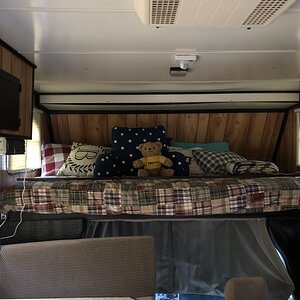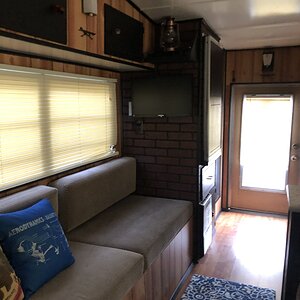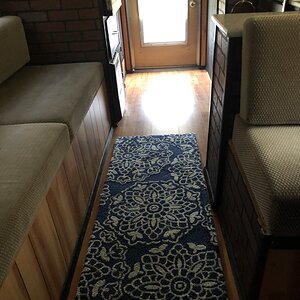- Joined
- Jul 27, 2019
- Messages
- 12,569
- Location
- Midlothian, VA
- RV Year
- 2017
- RV Make
- Newmar
- RV Model
- Ventana 4037
- RV Length
- 40' 10"
- Chassis
- Freightliner XCR
- Engine
- Cummins 400 HP
- TOW/TOAD
- 2017 Chevy Colorado
- Fulltimer
- No
It's true that no one else should tell you what tire pressure you should run. You need to look at the charts and decide from there. There are so many "opinions" and as you know as a pilot we pilots do charts, we do speeds per charts, not adding 5 and 10 knots for the parents, kids, pets. Okay, I hated flying the A-10 at charted final turn speed, I flew it fast, okay there!
My tires by chart are 75 rear and I think 85 front by corner weights. I am now running 105 front and 90 rear. My last trip to FL in Gaffney when I had corner weights done again he talked me into the higher pressures. RVSEF at a rally also preaches higher pressure which about gave me an aneurism as I believe in charts and not opinions. The consensus is lower pressure is harder on sidewalls, I believe that is true, that is my learned opinion. I do notice truck tires seem to be at max pressure, they seem to maintain their shape, makes me wonder. I feel more comfortable at higher pressures for load carrying and sidewalls. I found my ride actually improved at slightly higher pressure (balance). The reason for the lower pressure I believe is about nothing more than comfort, others please correct me if wrong. The tag axle allows for a more comfortable ride by allowing for lower rear axle(s) to run at a lower pressure.
Tough discussion as this wraps safety with opinion. You'll have to use your own judgment in the end.
My tires by chart are 75 rear and I think 85 front by corner weights. I am now running 105 front and 90 rear. My last trip to FL in Gaffney when I had corner weights done again he talked me into the higher pressures. RVSEF at a rally also preaches higher pressure which about gave me an aneurism as I believe in charts and not opinions. The consensus is lower pressure is harder on sidewalls, I believe that is true, that is my learned opinion. I do notice truck tires seem to be at max pressure, they seem to maintain their shape, makes me wonder. I feel more comfortable at higher pressures for load carrying and sidewalls. I found my ride actually improved at slightly higher pressure (balance). The reason for the lower pressure I believe is about nothing more than comfort, others please correct me if wrong. The tag axle allows for a more comfortable ride by allowing for lower rear axle(s) to run at a lower pressure.
Tough discussion as this wraps safety with opinion. You'll have to use your own judgment in the end.












